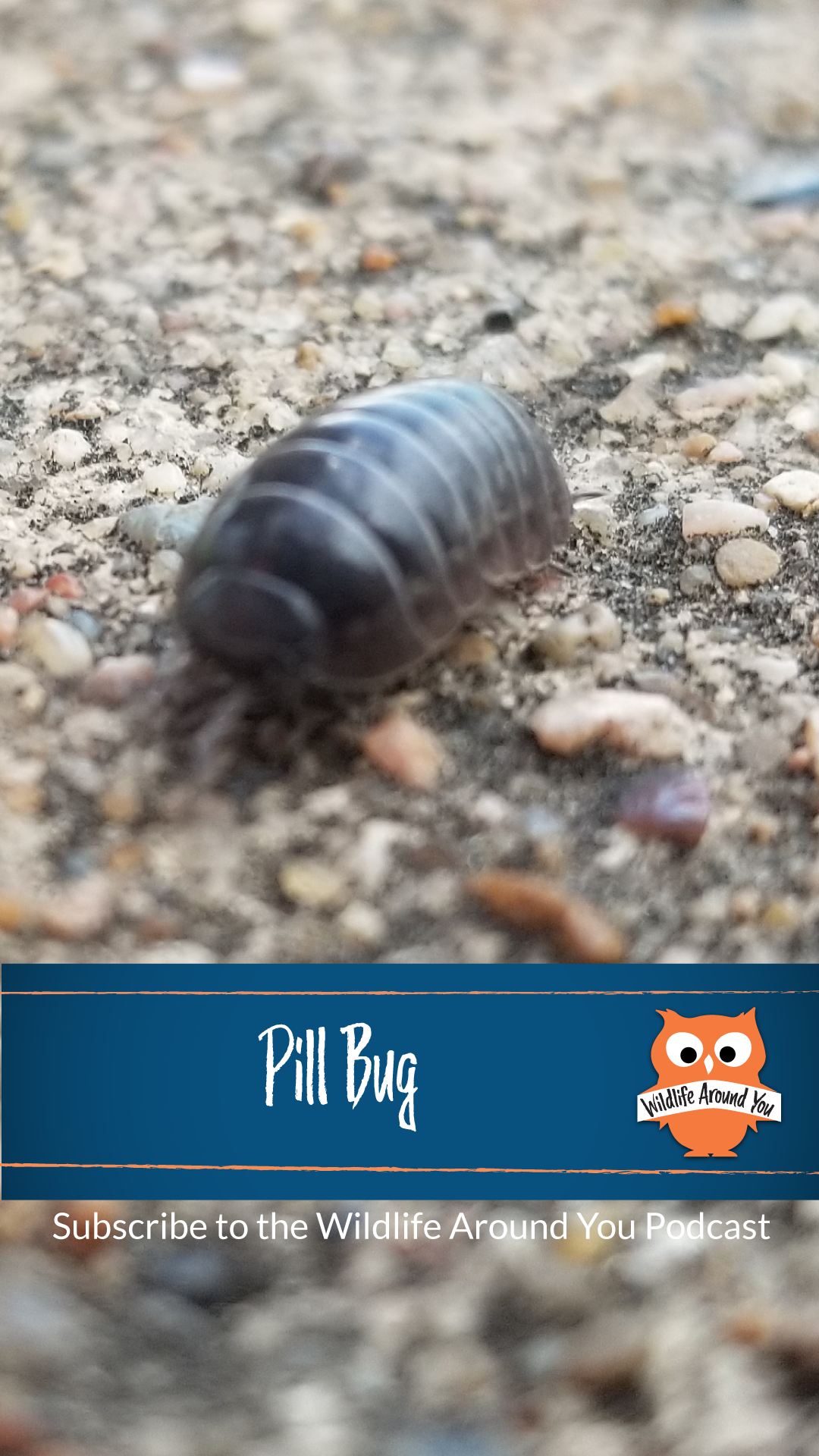aka woodlice, roly-polies, potato bugs, sowbugs, doodlebug
Identification
- They are small, segmented land-dwelling crustaceans.
- Pill bugs have a grayish or brownish coloration and measure up to about half an inch in length.
- They have a characteristic oval-shaped body and a hard exoskeleton made up of overlapping plates.
- They have 7 pairs of legs or 14 legs total.
Habitat
- Pill bugs are found worldwide, but they are most commonly found in cool, moist environments.
- They are native to the Mediterranean, but were introduced to New England and spread across the Americas.
- They thrive in habitats such as forests, gardens, and damp areas like leaf litter, under rocks, logs, or decaying vegetation.
- Pill bugs prefer dark and humid environments to prevent excessive water loss.
Nesting
- During the day they often take refuge in moist, dark crevices or under objects like rocks, logs, or plant debris.
- Pill bugs can also dig shallow burrows in the soil or use pre-existing tunnels made by earthworms or other animals.
Behavior
- Pill bugs are primarily nocturnal creatures, becoming more active during the night.
- They are generally slow-moving but can move quickly when disturbed.
- Pill bugs have the unique ability to roll up into a tight ball when threatened, hence their name “pill bug” or “roly-poly.”
- They feed on decaying organic matter like dead plants and animals.
Offspring
- Pill bugs have a unique method of reproduction called “pseudocopulation.”
- During pseudocopulation, the male pill bug deposits sperm packages onto the female’s body, which she then collects and uses to fertilize her eggs.
- The female carries the fertilized eggs in a brood pouch on her underside until they hatch into small, immature pill bugs.
- The young pill bugs resemble miniature versions of the adults and undergo a series of molts to grow.
Predators
- Pill bugs have a few natural predators, including birds, amphibians, reptiles, and small mammals.
- Insects such as spiders and predatory beetles may also prey upon them.
- Pill bugs rely on their defensive mechanism of rolling into a ball to protect themselves from predators.
Diet
- Pill bugs are primarily scavengers and feed on decaying plant material, dead insects, fungi, and organic debris.
- They play an important role in breaking down and recycling organic matter in ecosystems.
- Pill bugs have specialized mouthparts for grinding up food and extracting nutrients.
Fun Facts
- Pill bugs are not insects but are actually land-dwelling crustaceans, related to lobsters and shrimp.
- They are one of the few crustaceans adapted to life on land.
- Pill bugs breathe through modified gills, located under their exoskeleton, which allows them to extract oxygen from the air.
- Contrary to popular belief, pill bugs are not harmful to humans and do not bite or sting.
- They are often used as study subjects in biology classrooms to observe behavior and learn about adaptations.
- They can be pests and cause problems in some homes, and to agricultural crops.
- If it loses one of it’s legs, it will grow back in just a few weeks.
- Pill bugs typically drink through their mouths, but also have the ability to drink using their rear-end if needed.
- When oxygenated, pill bug blood appears blue because it contains hemocyanin like many other crustaceans instead of hemoglobin. Hemocyanin contains copper ions.
- If you ever see a bright blue or purple pill bug, it is a sign that it has a virus and is sick.

